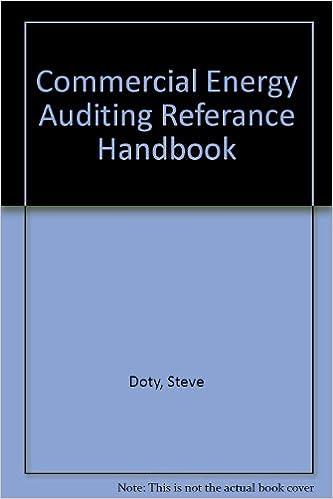Question
Earnest T. Bass, Inc., had the following debit general ledger balances as of January 1, 2022: Cash - $173,500; Short-term Investments $20,000; Accounts Receivable $32,500;
Earnest T. Bass, Inc., had the following debit general ledger balances as of January 1, 2022: Cash - $173,500; Short-term Investments $20,000; Accounts Receivable $32,500; Prepaid Insurance - $8,000; Inventory $55,000; Land $75,000; Buildings -$175,000; and Equipment $80,000. They had the following credit general ledger balances as of January 1, 2022: Accounts Payable - $48,500; Salaries Payable - $32,500; Property Taxes Payable - $35,000; Short-Term Notes Payable - $0; Income Taxes Payable - $25,000; Interest Payable - $20,000; Long-Term Notes Payable - $187,500; Common Stock (4,000 shares outstanding) - $80,000; and Retained Earnings Unknown.....the server on the computer system crashed and this was lost. Earnest T. Bass, Inc. sells t-shirts retail. That is, they buy t-shirt inventory and sell them at a profit. Occasionally a customer will place a special order and the company will embroider custom made t-shirts. In addition, the company has a line of credit with their bank. Anytime their cash balance falls below zero, they borrow money in $10,000 increments at an annual interest rate of 12%. For example, if their cash balance was -$500, they would borrow $10,000. If their cash balance was -$12,000, they would borrow $20,000. These short-term notes payable are paid off in $10,000 increments, including interest, when there is adequate cash on hand. For example, assume they have borrowed $20,000 on their line of credit. If they had a cash balance of $11,000, they could pay off $10,000 plus interest. The cash balance must be zero or positive at all times. For purpose of interest calculations, assume a 365 day year and assume the dollars are borrowed at the end of the business day and any repayments occur at the end of the business day. During the month of January, 2022, Earnest T. Bass, Inc. had the following transactions: On January 2nd, inventory was purchased on credit amounting to $20,000. On January 3rd, the company issued an additional 1,000 shares of common stock for $15.00 per share, all received in cash. On January 6, 2022, the company paid $60,000 in cash for property taxes covering the period June 1, 2021 through May 30, 2022.
On January 9th, accounts payable totaling $48,500 was paid in cash. On January 15th, one-half of the inventory on hand was sold for $50,000 on credit. On January 17th, payments were received on accounts receivable totaling $30,000. On January 19th, the company paid salaries of $60,000 for December, 2021 and January, 2022. Insurance premiums of $24,000 were paid on January 20th, 2022. These premiums were for a policy that provides coverage from February 1, 2022 through April 30, 2022. The long-term notes payable of $187,500 has an annual interest rate of 10%. Principal and interest will be paid together on January 30, 2024. 2021 income taxes were paid on January 31, 2022. Income taxes for 2022 will equal 40% of net income. If there is a net loss, no income taxes will be due. Ignore depreciation i.e. do not make an entry for depreciation.
Required (please answer all) 1. Prepare all general journal entries for the month of January, 2022. 2. Prepare a trial balance as of 1/31/22. 3. Prepare all closing entries for the month of January, 2022. 4. Prepare a post-closing trial balance as of 1/31/22. 5. Prepare the income statement, balance sheet and statement of changes in retained earnings for the month of January, 2022 in their proper formats.
Step by Step Solution
There are 3 Steps involved in it
Step: 1

Get Instant Access to Expert-Tailored Solutions
See step-by-step solutions with expert insights and AI powered tools for academic success
Step: 2

Step: 3

Ace Your Homework with AI
Get the answers you need in no time with our AI-driven, step-by-step assistance
Get Started


